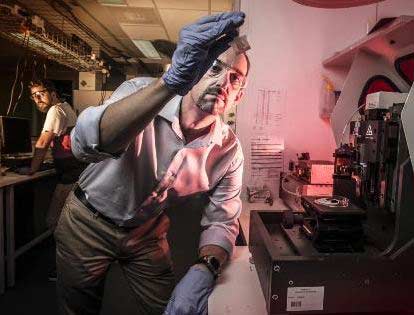Researchers have started to develop 3D printed materials that morph into new structures post production, under the influence of external stimuli, such as water or heat — hence the name, 4D printing. The fourth dimension is time, shape shifting in fact, and the ARC Centre of Excellence for Electromaterials Science (ACES) at the University of Wollongong is helping to set the pace in the next revolution in additive manufacturing.
Researchers at the ARC Centre of Excellence for Electromaterials Science (ACES) at the University of Wollongong (UOW) have turned their attention to the medical field of soft robotics, manufacturing a valve that actuates in response to its surrounding water’s temperature.
ACES Professor Marc in het Panhuis said it was the cleverness of the valve’s creation that was remarkable.
“The cool thing about it is, it’s a working functioning device that you just pick up from the printer,” he said. “There’s no other assembly required.”
Researcher Marc in het Panhuis, who said it was the cleverness of the valve’s creation that was remarkable, noted that the cool thing about it is, is it’s a working functioning device that people just pick up from the printer, adding there’s no other assembly required. The materials scientist said the valve, a 3D printed structure, possessed actuators that are activated solely by water and so it’s an autonomous valve, there’s no input necessary other than water; it closes itself when it detects hot water.
4D printing: materials that morph into new structures post production

Another dimension: Professor Marc in het Panhuis and PhD student Shannon Bakarich are building objects using 4-D printing, where time is the fourth dimension. Credit: University of Wollongong/Paul Jones
